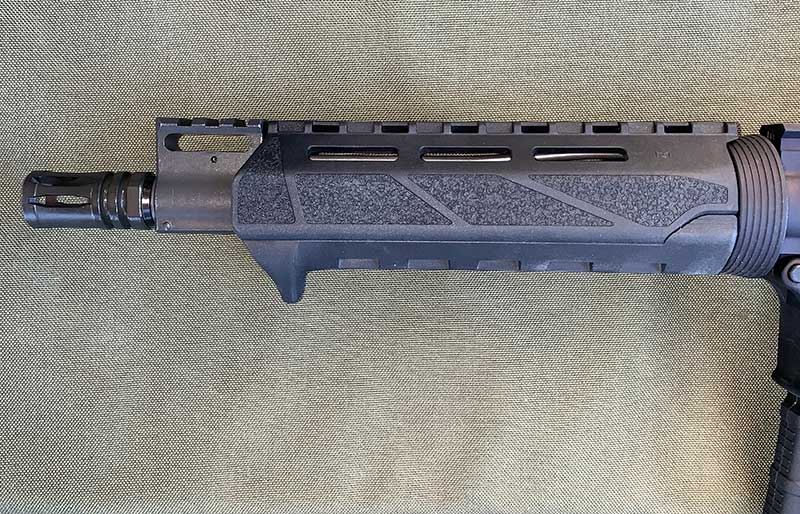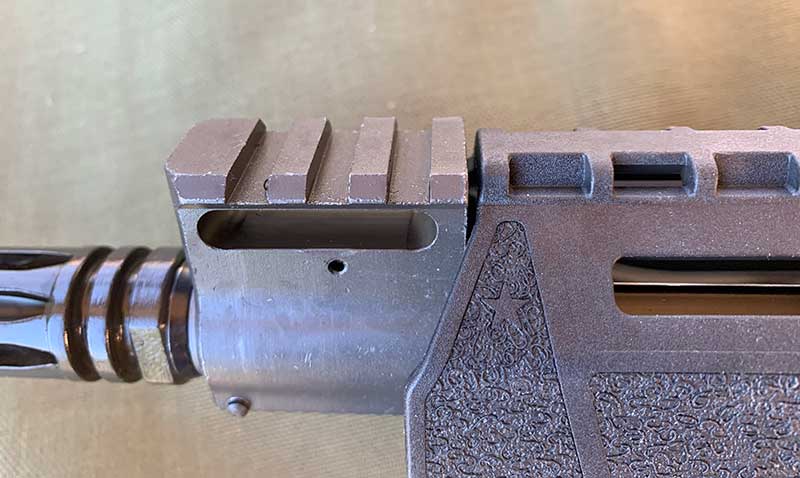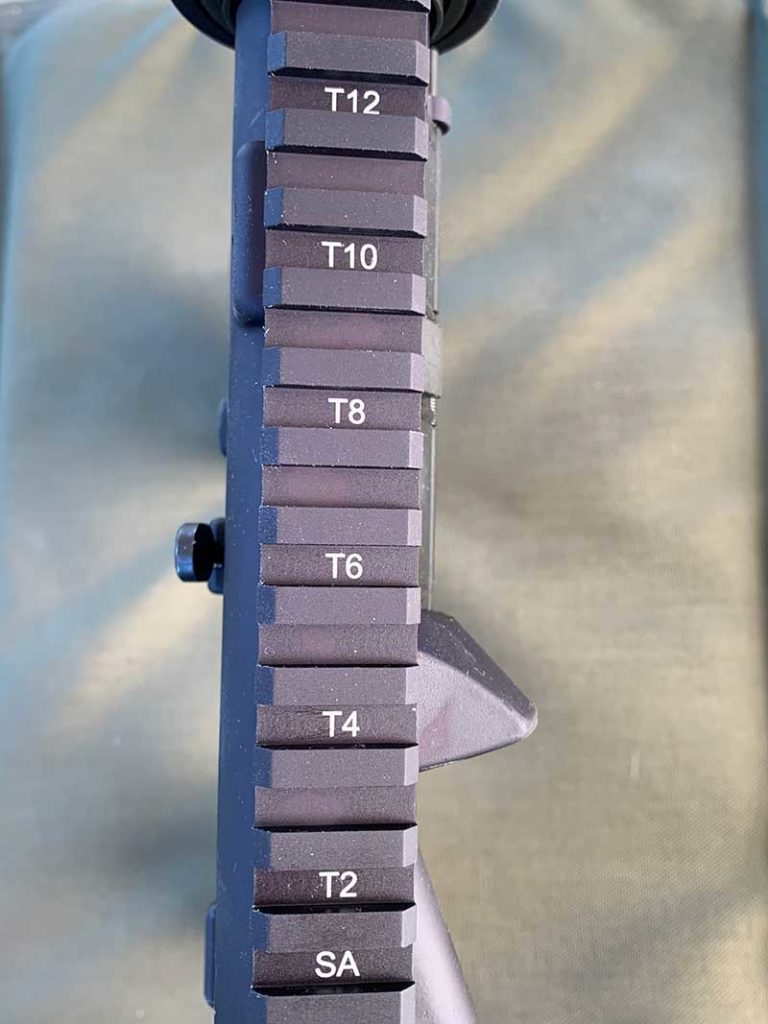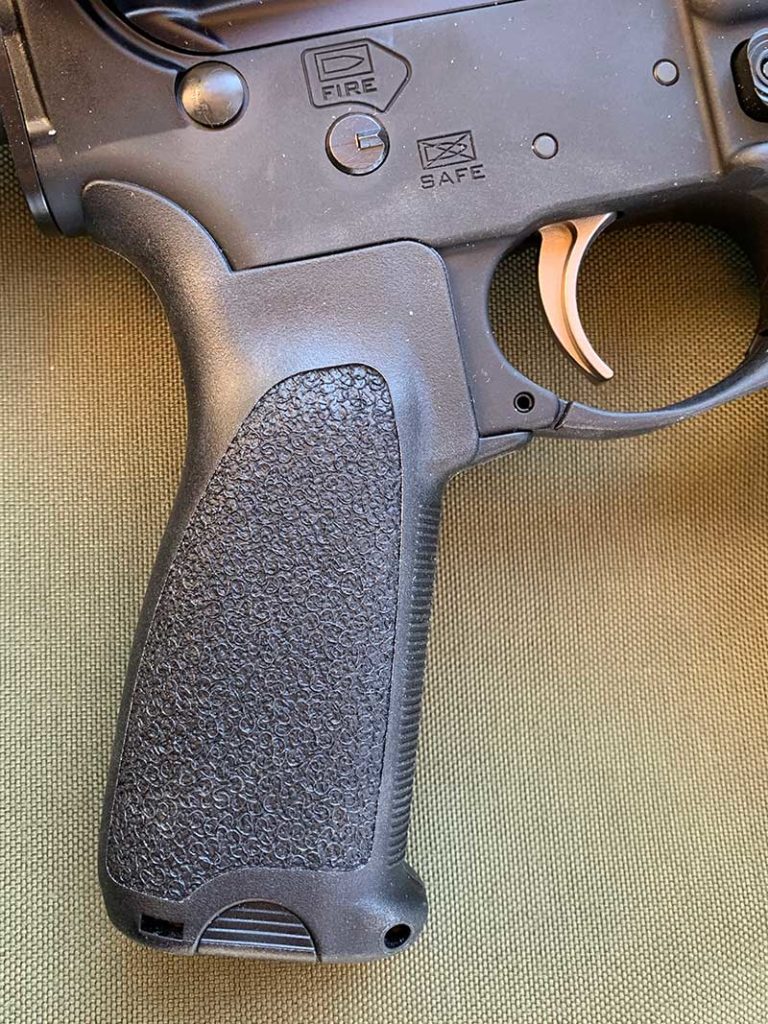
AC-062321-SAINT-S-1-556
When the SB-Tactical brace was released, they received a letter from the Bureau of Alcohol, Tobacco, and Firearms saying the device didn’t turn a pistol into a rifle. It didn’t take long for gun owners to install a brace onto AR pistols creating a working man’s short-barreled rifle (SBR).
In 2015 ATF issued a letter that said, “misusing” the brace by putting it against your shoulder “remade” the pistol into a rifle making it fall under NFA as an SBR.
ATF later reversed its reversal and said as long as the brace is installed as intended and isn’t modified, putting it against a shoulder did not mystically transform turn it into a Decepticon SBR. Since that time AR pistols with a brace have become tremendously popular.
At the time of this writing ATF is considering reversing their reversal…
Some people prefer to build (actually assemble) their own AR pistol, but if quality parts are used the final cost may be higher than a quality firearm already assembled by a respectable firm.
An excellent example is the new SAINT™ Pistol from Springfield Armory.
SAINT OVERVIEW
With a suggested retail price of just $849.00, the SAINT Pistol is designed to offer shooters the quality and performance they expect at an affordable introductory price point. The pistol has upgraded features throughout, ensuring it delivers exceptional value and making it an ideal firearm for home protection and personal defense.
These features include:
• Upper Receiver: Forged 7075 T6 Aluminum, Type III Hardcoat Anodized, Forward Assist, M4 Feed Ramps
• Lower Receiver: Forged 7075 T6 Aluminum, Type III Hardcoat Anodized, Accu-Tite™ Tension System
• Gas System: Direct Impingement Carbine-Length
• Picatinny Pinned Gas Block
• Trigger: Nickel Boron Coated GI
• Trigger Guard: BCMGUNFIGHTER™
• Pistol Grip: BCMGUNFIGHTER™ Mod 3
• Handguard: BCMGUNFIGHTER™ PCMR, Forward Handstop, M-Lok
• Forearm Brace: Trinity Force Breach Brace 1.0 Std. Pistol
• Buffer Assembly: Carbine “H” Heavy Tungsten Buffer
• Receiver Extension: SA Pistol
• Bolt Carrier Group: M16, Carpenter 158 steel bolt, HPT/MPI, Melonite®
The pistol is chambered 5.56x45mm NATO which, of course, also allows firing .223 Remington fodder. Length is 25.75 to 28.25 inches and unloaded weight is five pounds, eight ounces.
The SAINT Pistol features a balanced 9.6-inch chrome moly vanadium barrel, with a 1:8 twist, which is an excellent compromise between the 1:9 for lighter bullets and the 1:7 for the heavier stuff.
I was glad to see that so much attention was paid to the bolt carrier group and that it is made from the correct Carpenter 158 Steel and it has undergone a high pressure test and magnetic particle inspection. I disassembled the bolt and sure enough, it uses the appropriate black (carbine) extractor buffer instead of the blue (rifle) buffer found in some manufacturers guns. Perhaps a small detail, but still appreciated.
The adjustable premium Trinity Force® Breach Brace meets ATF requirements for pistol classification. While it is indeed adjustable, it requires loosening two bolts to slide to adjust it. The brace comes adjusted flush with the lower receiver extension (buffer tube). A slot in the brace allows a sling to be attached.
The Picatinny rail on the upper receiver is “T-Marked” T2 through T12. This ensures you will be replacing an optic in the same location every time, with little change of impact. Another short rail section is attached to the top of the gas block.
The BCMGUNFIGHTER™ PCMR, Forward Handstop is a great idea as the support hand gets very close to the muzzle of the short pistol barrel. This forend has three MLOK slots at the one o’clock, six o’clock and eleven o’clock positions for lights or lasers. Muzzle device is an A2-type flash hider.
In addition to being marked with the usual “Safe” and “Fire” verbiage, pictograph symbols are used for the literacy challenged.
No sights are included with the pistol. It comes with one 30-round Magpul Gen M3 PMAG and a soft, zipper closure AR-15 pistol case with two exterior pockets, and a cable padlock.
I installed an Aimpoint Micro-T2 red dot sight, gathered some Black Hills Ammunition 62-gr. Barnes TSX 5.56mm rounds for accuracy tests and three hundred rounds of reloads in order to wring out the SAINT Pistol.
RANGE TESTS
I also took a 14.5-inch barrel BCM carbine with a permanently pinned Battle Comp Enterprises compensator to compare the velocity between carbine and pistol length barrels.
Accuracy tests were conducted from 50 yards. Two, five-round strings of fire were conducted from each firearm. Groups with the pistol averaged 3.5 inches. Extrapolating this out, all things being equal, one could expect a group of seven to eight inches at 100 yards. Granted not as precise as a rifle, but still well within minute-of-bad guy and capable of making a head shot at 50 yards or less.
The carbine turned in groups that averaged just under two inches.
Backing up ten feet from the screens of my PACT chronograph (so muzzle blast would not give a false reading) I shot a ten-round string from each gun. The results were that the pistol averaged 2,290 feet-per-second (fps) while the carbine averaged 2,660 fps. A difference of 370 fps.
In terms of foot pounds of energy the pistol has 729.1 and the carbine has 974. Yes, that’s a big difference, but consider that a .357 Magnum, 125-gr. JHP leaving the muzzle at 1,500 fps produces 625 foot pounds of energy, so the rounds from the SAINT pistol still have more punch.
While 40 rounds can determine a baseline for accuracy and velocity, it does not establish reliability.
I fired numerous drills on my range, expending 300 rounds of reloaded ammunition. I had one double feed malfunction that was traced to bad feed lips in an aluminum magazine. I fixed the problem magazine using my standard protocol of placing it on a rock and smashing it with my boot. Other than that, the SAINT was 100% reliable.
The only downside I could see is that the muzzle blast from the SAINT’s short barrel is tremendous. The muzzle flash produced could be seen even in bright daylight.
WHY AN AR PISTOL?
Because the terminal ballistics of a carbine are far superior to a pistol, some might wonder why not just stick to the longer gun. The main reason, obviously, is the size.
The compact size makes it good choice where space is at a premium. This would include an RV, a boat, or a private aircraft. At just over two feet in length, it’s much easier to find a place to fit the SAINT compared to a carbine or rifle. Inserting a twenty or even a ten-round magazine would make storage even easier.
For home defense, the shorter SAINT would minimize the chances of “flagging” yourself while negotiating a corner or possibly bump into something alerting a ne’er-do-well to your exact location. It would also be easy to deploy it from a vehicle. With that said, firing the SAINT from inside any enclosure would undoubtedly cause temporary—if not permanent—hearing loss.
If you are in the market for a compact AR pistol put the SAINT at the top of your list. It is on mine.
SPRINGFIELD ARMORY
www.springfield-armory.com





















